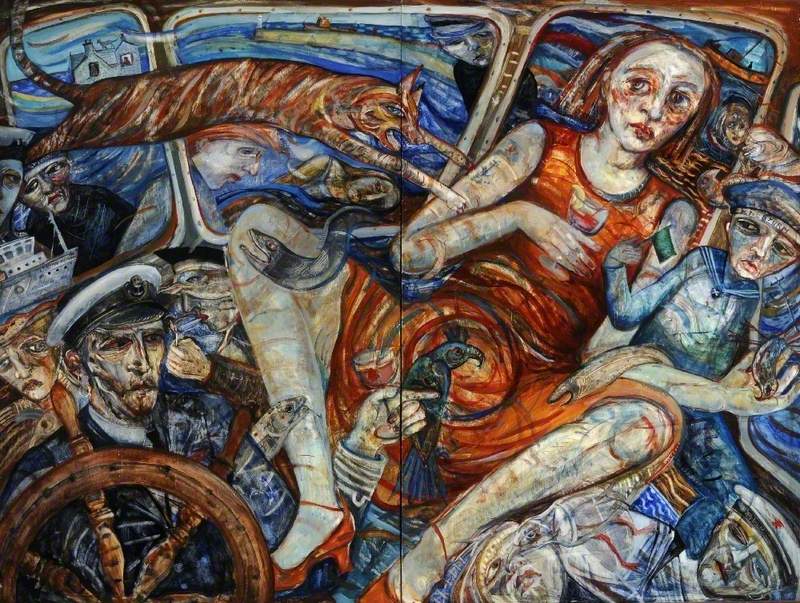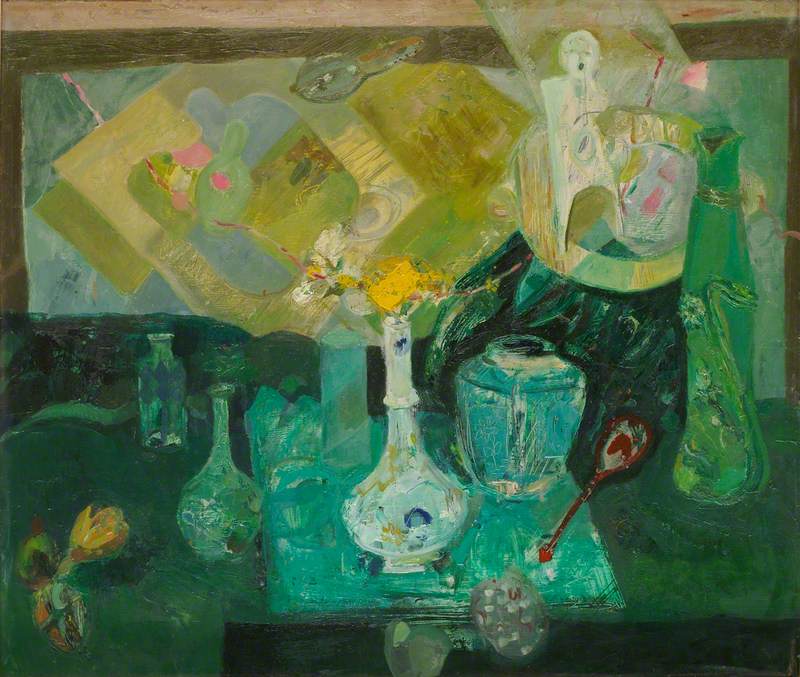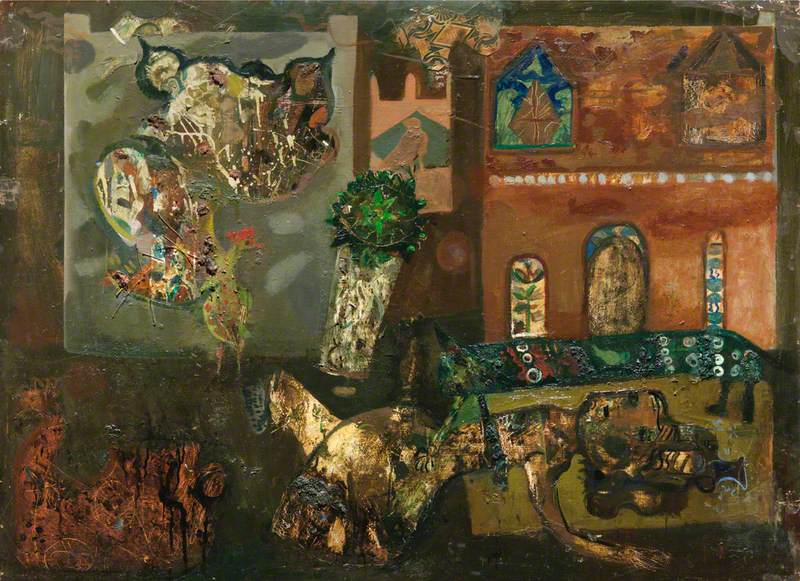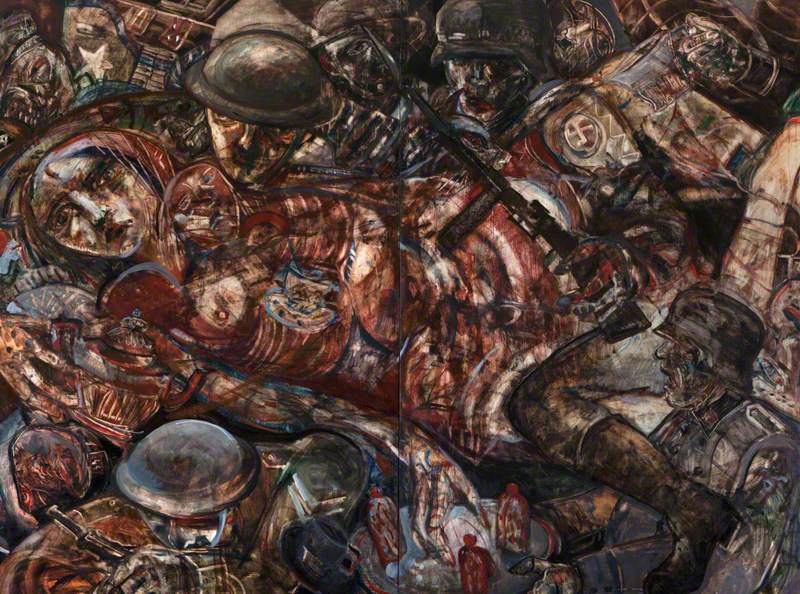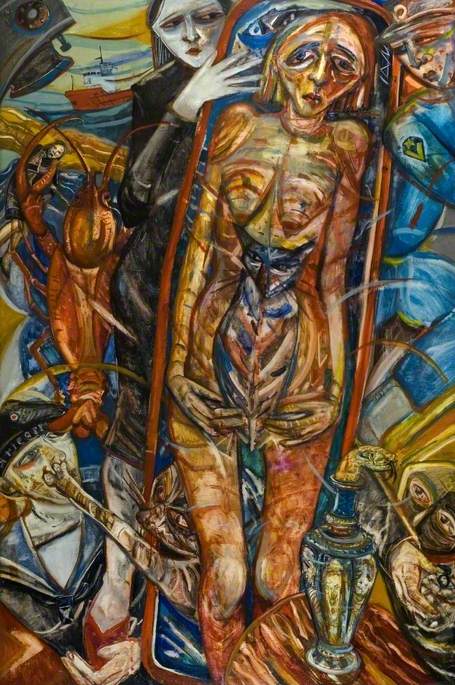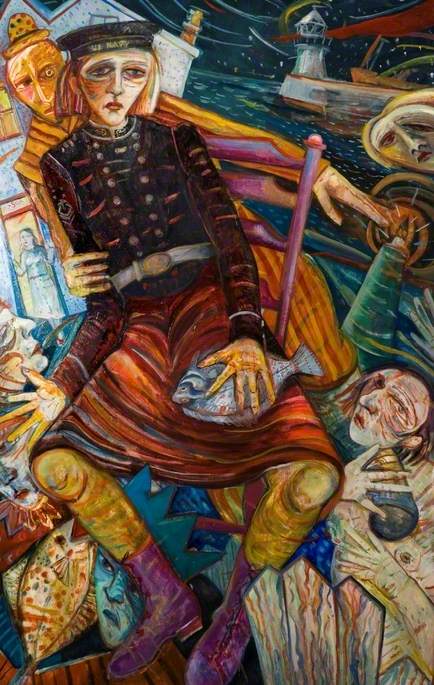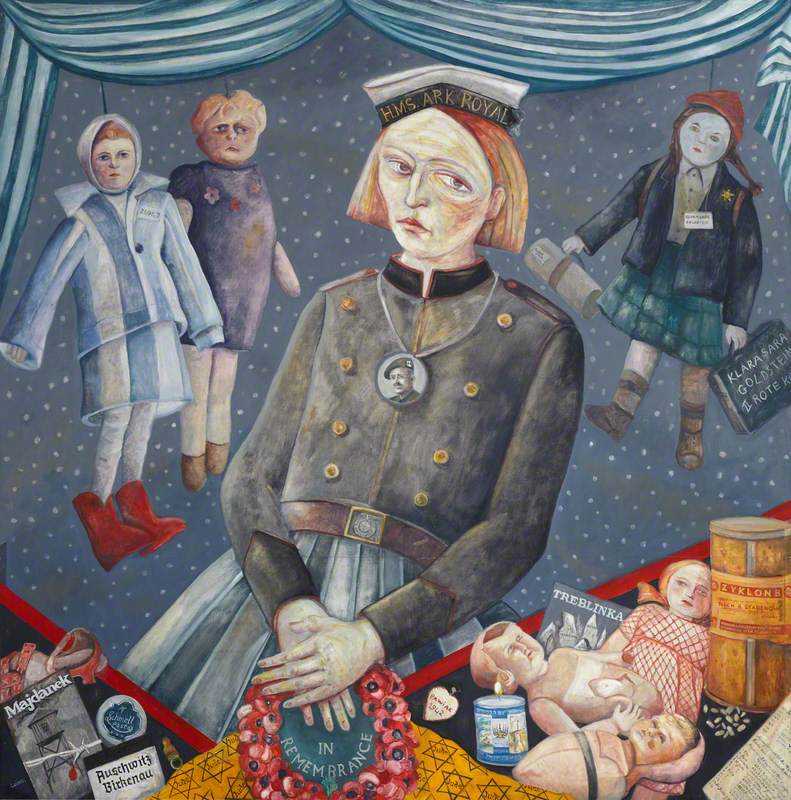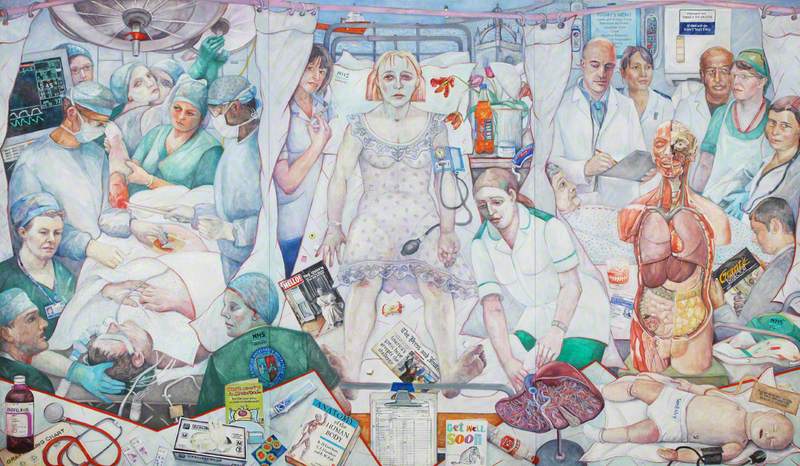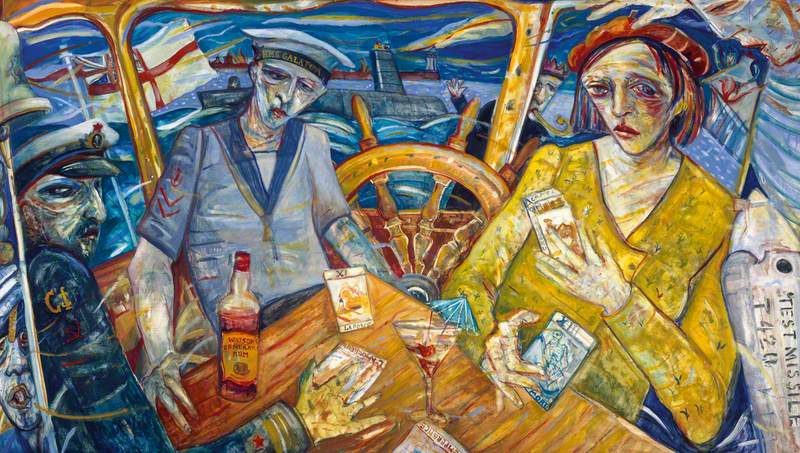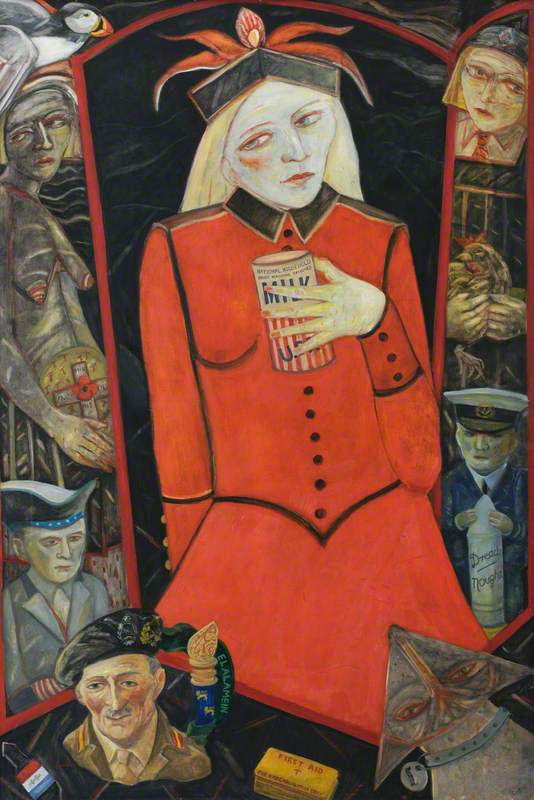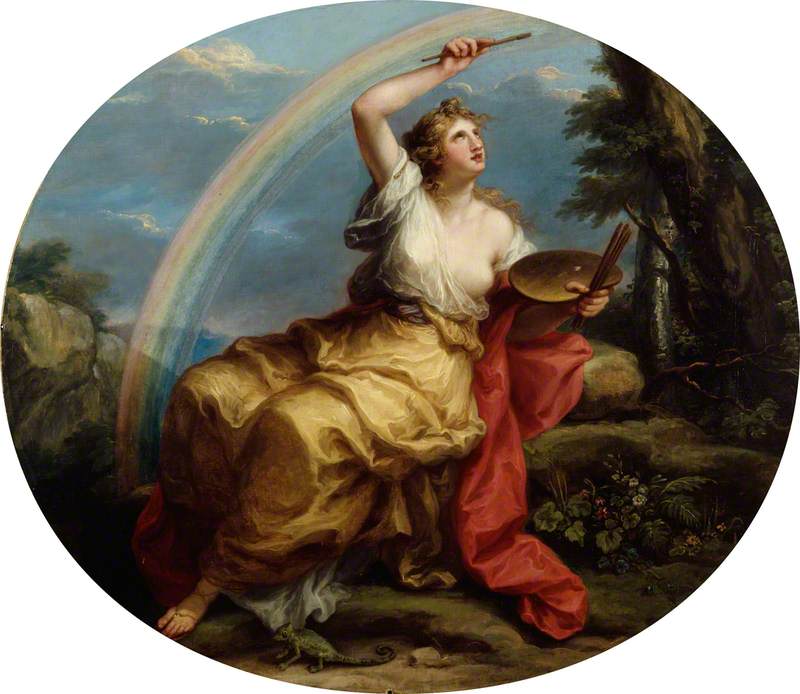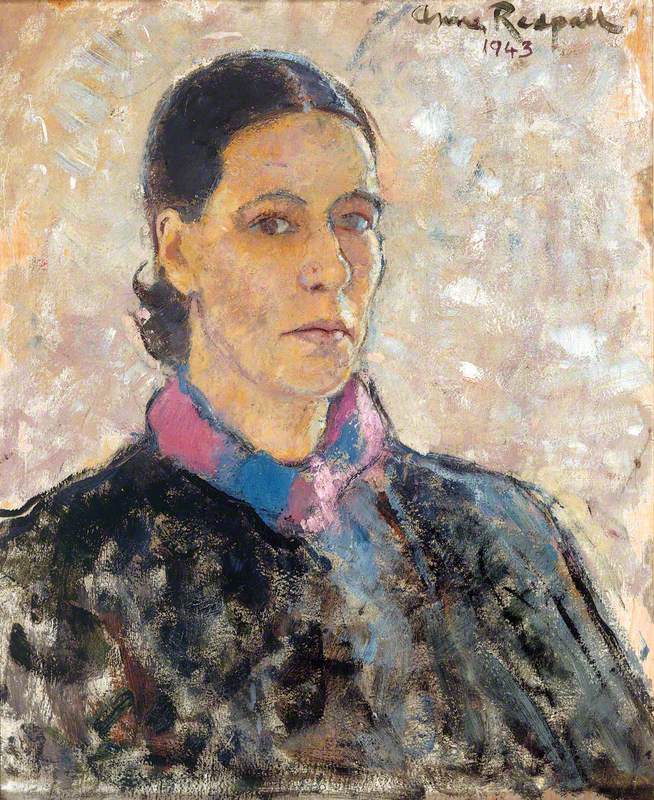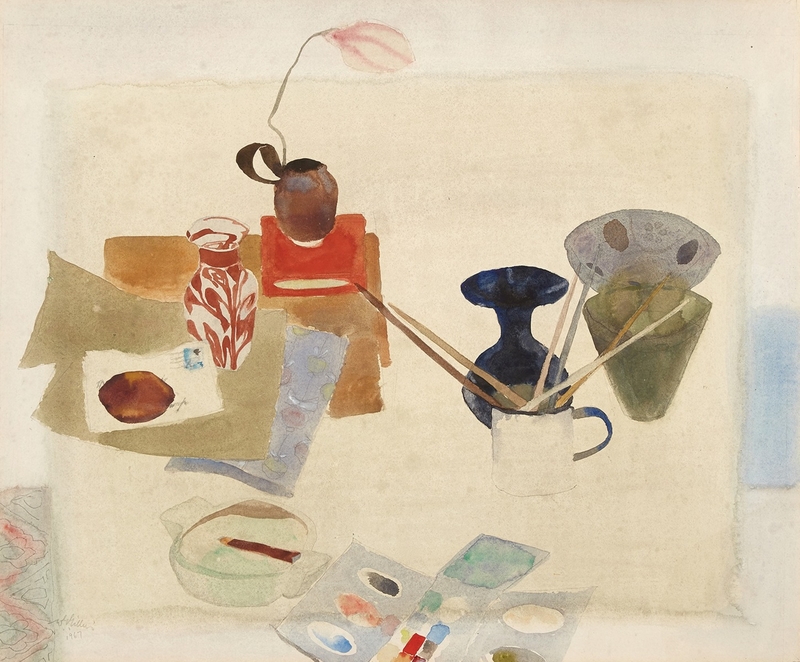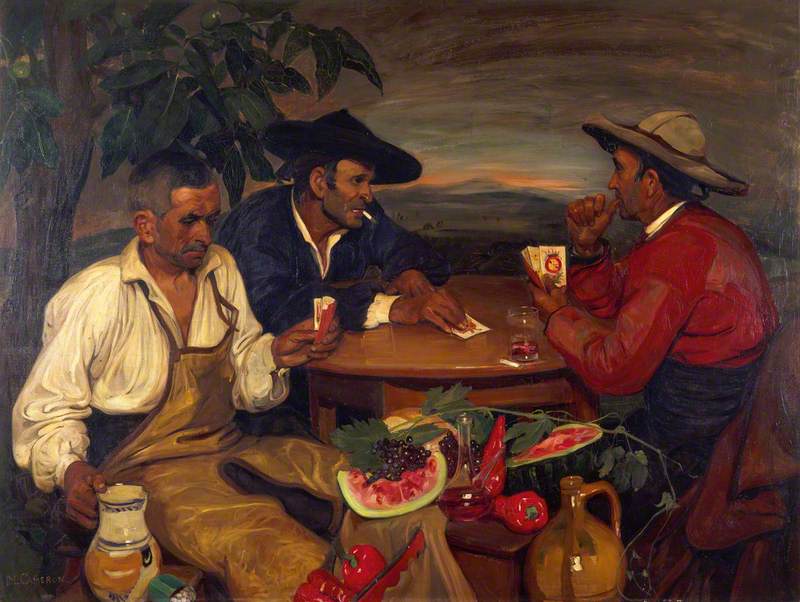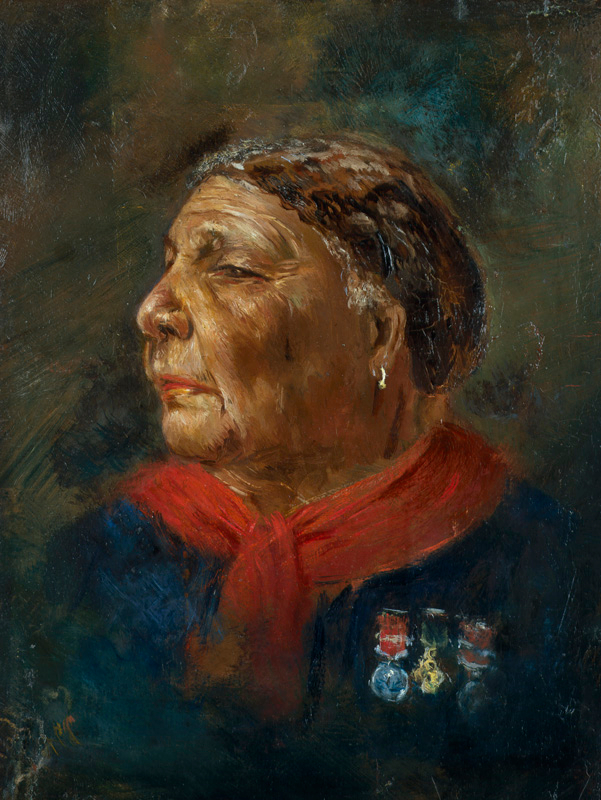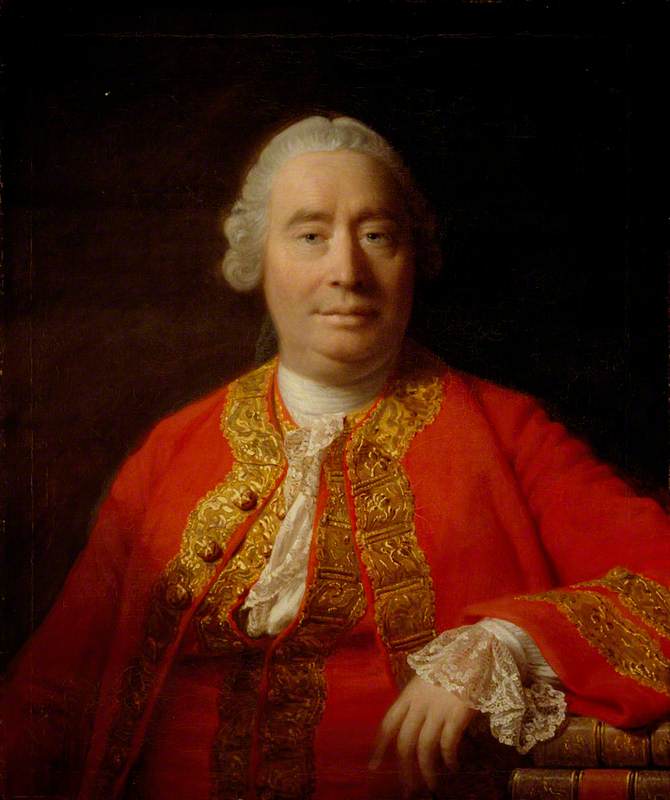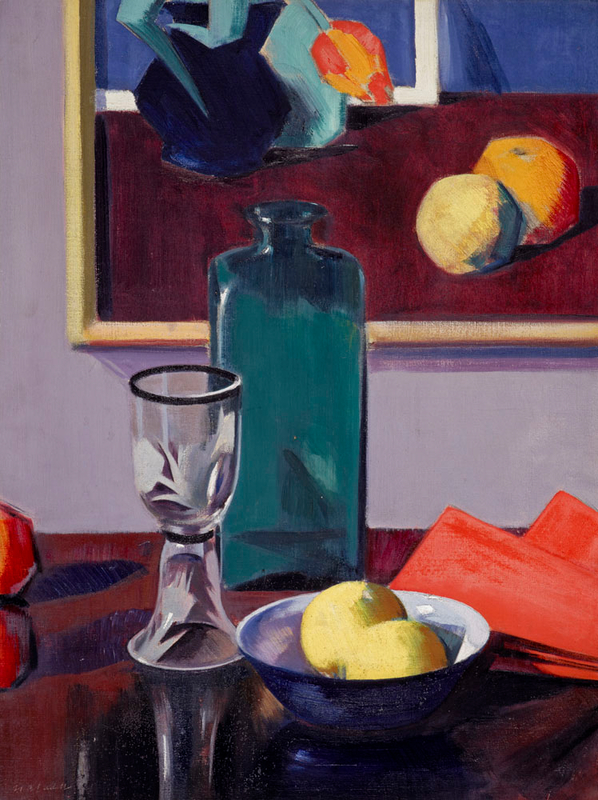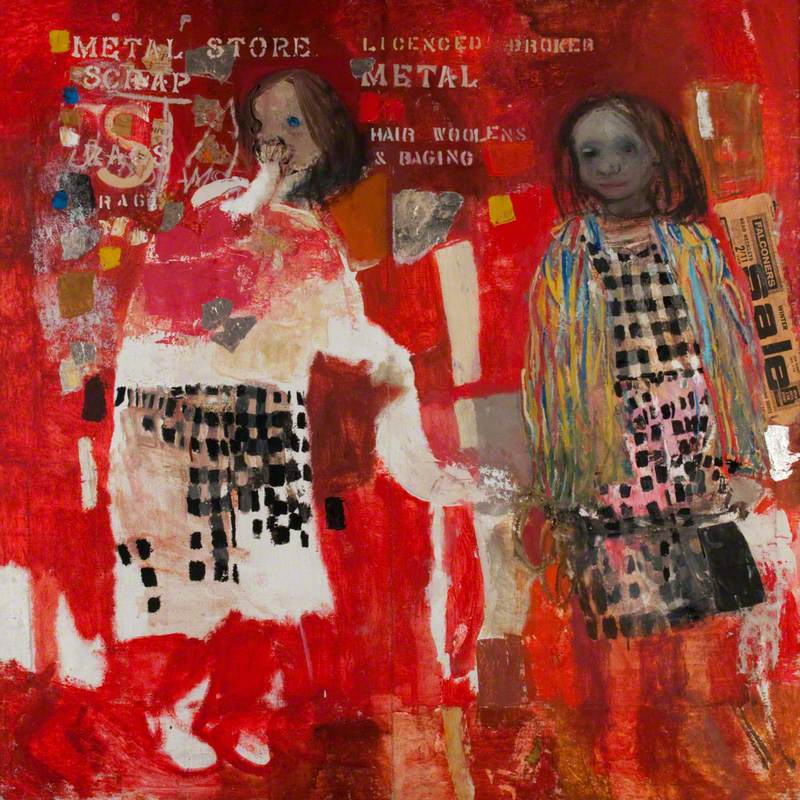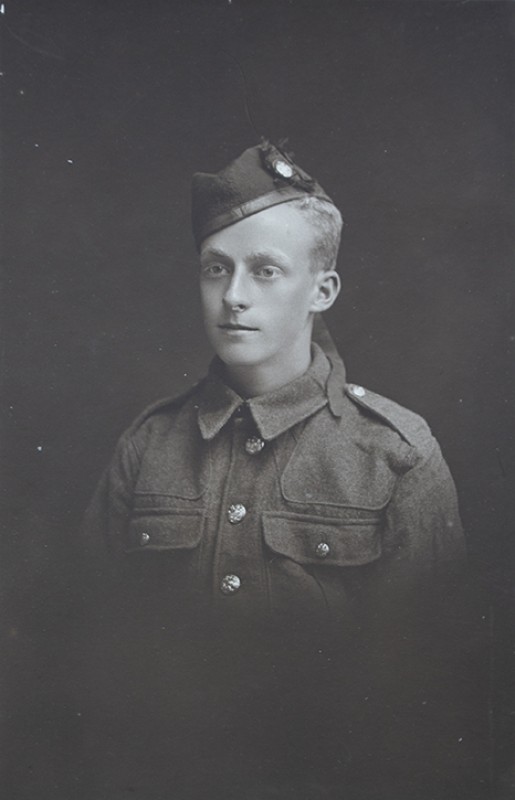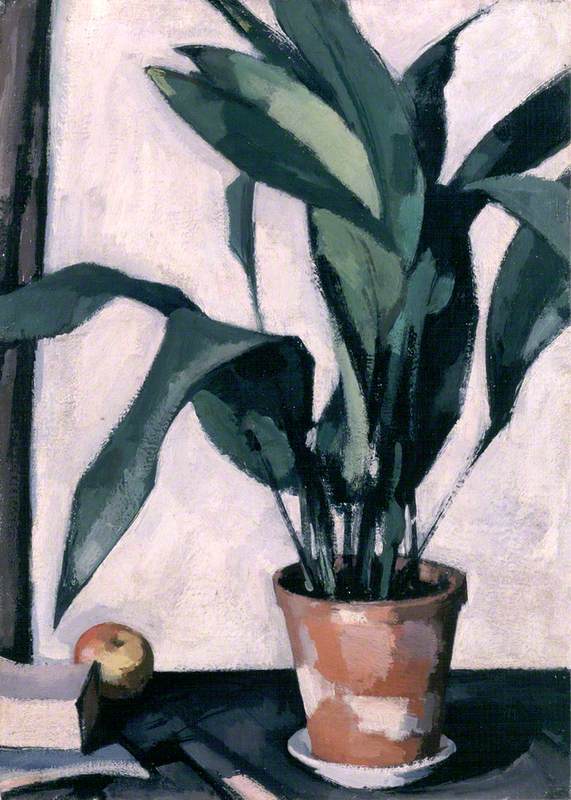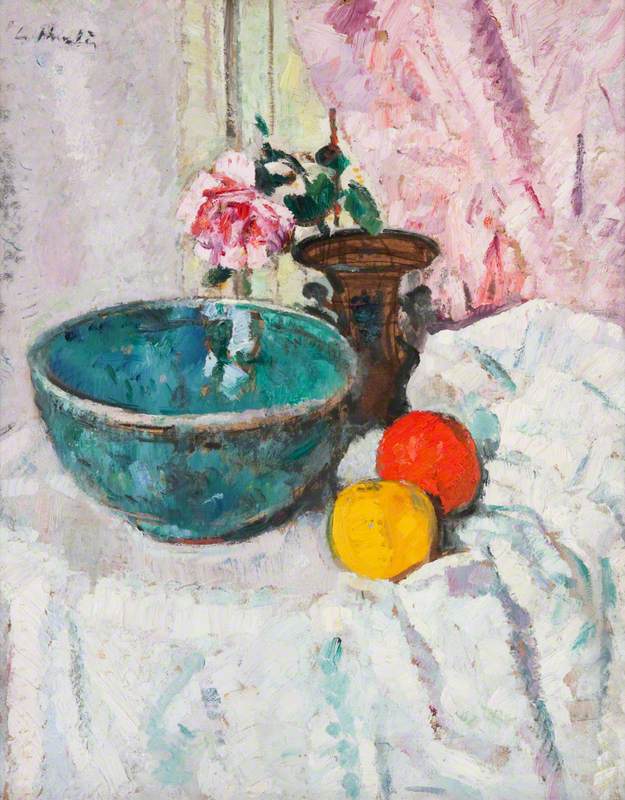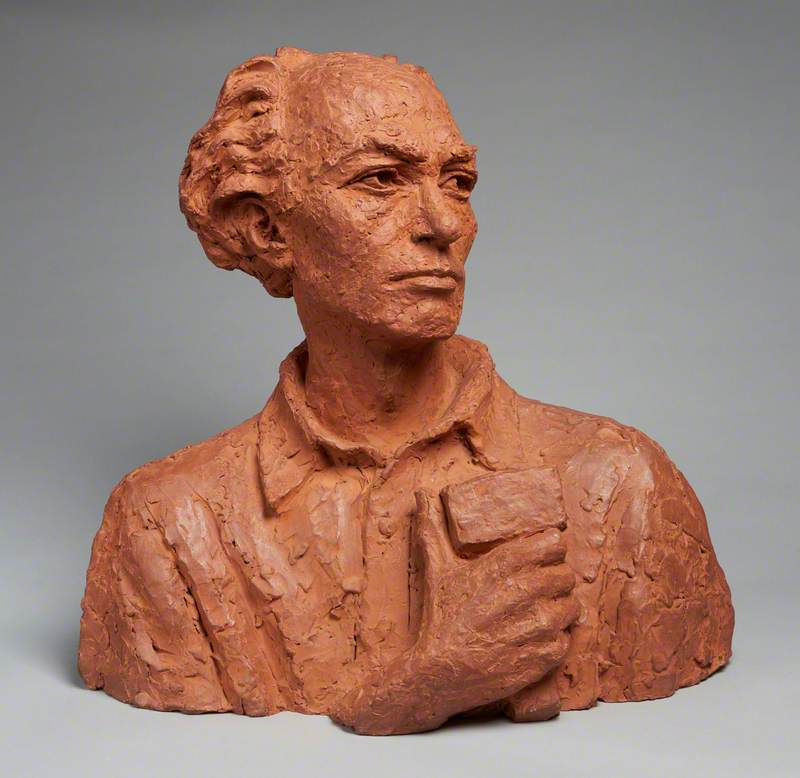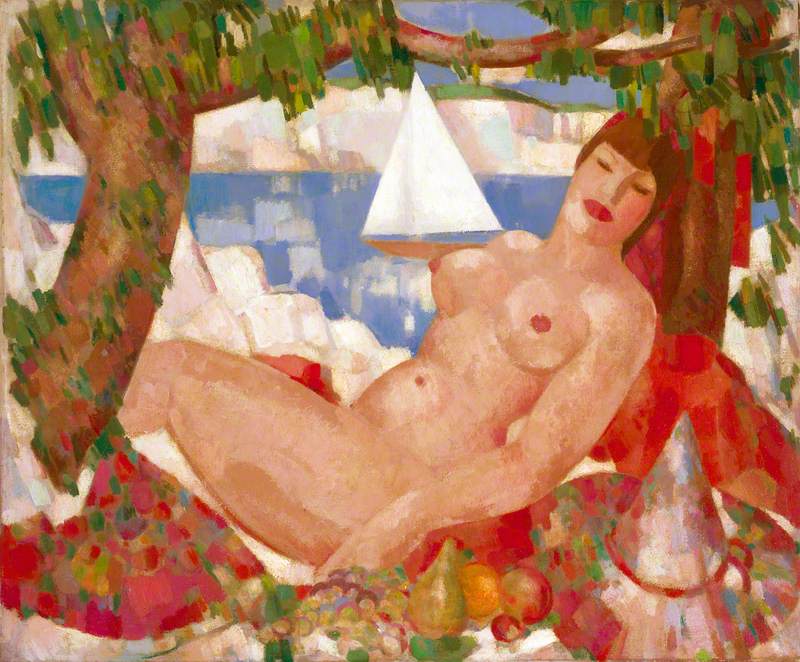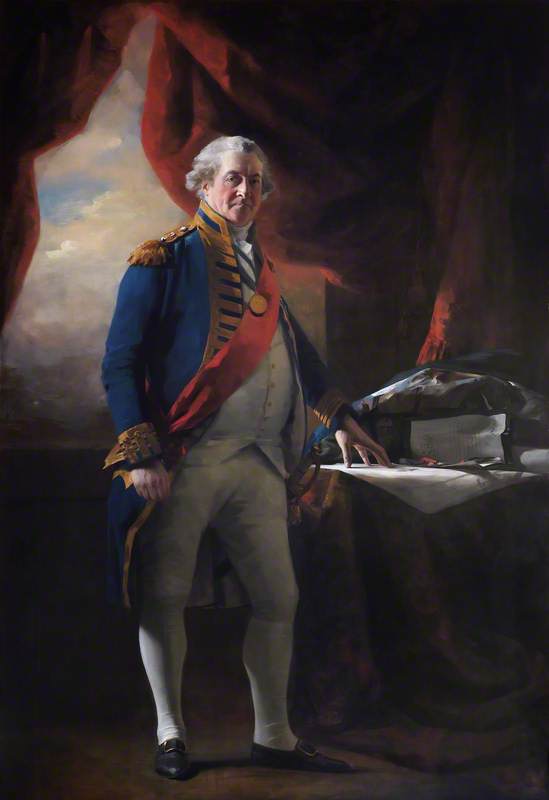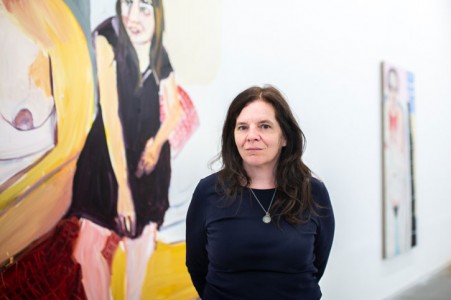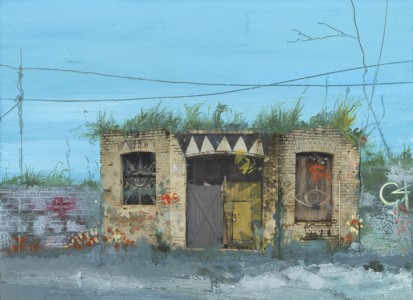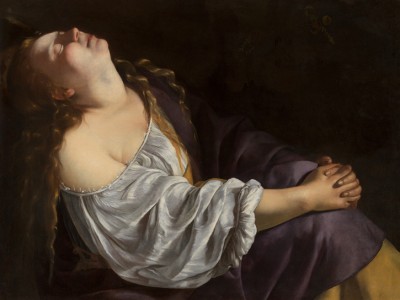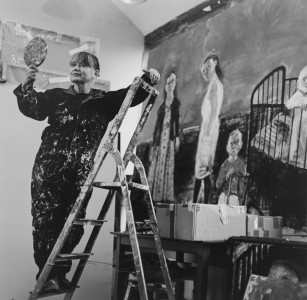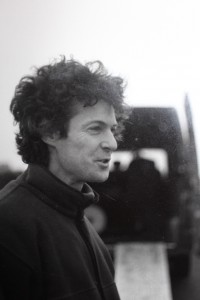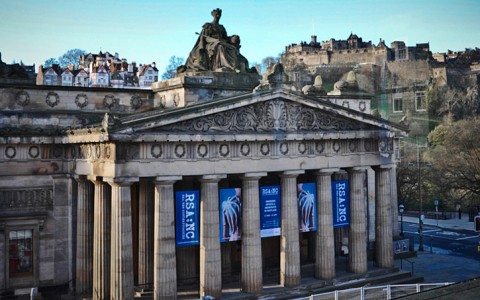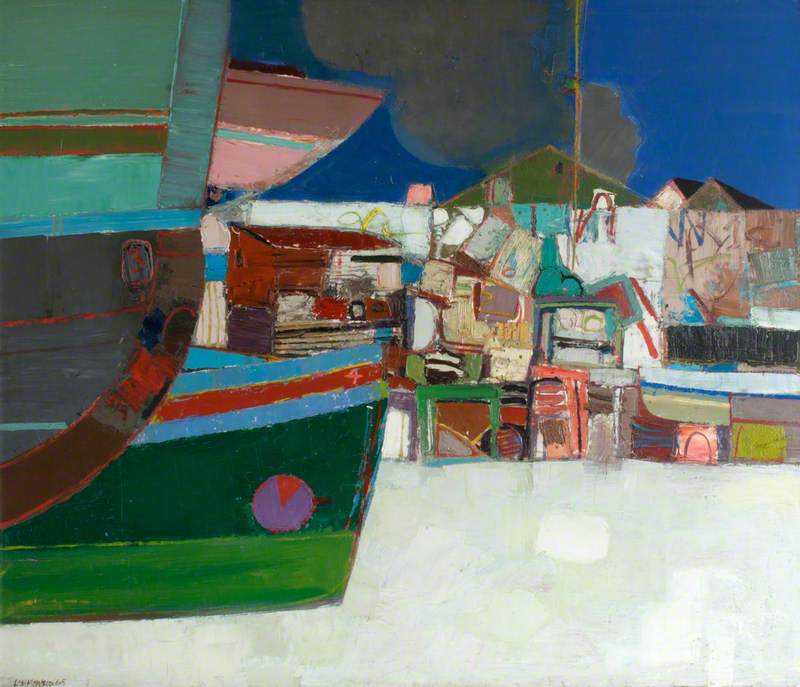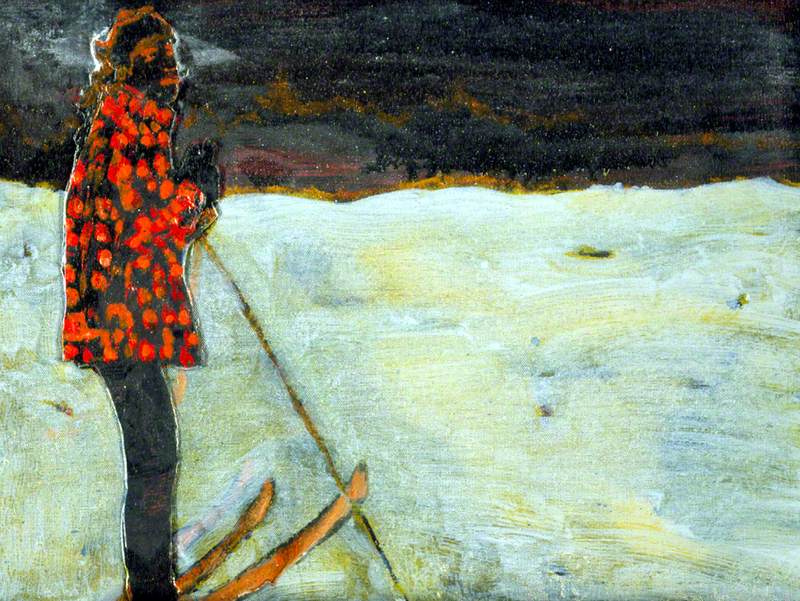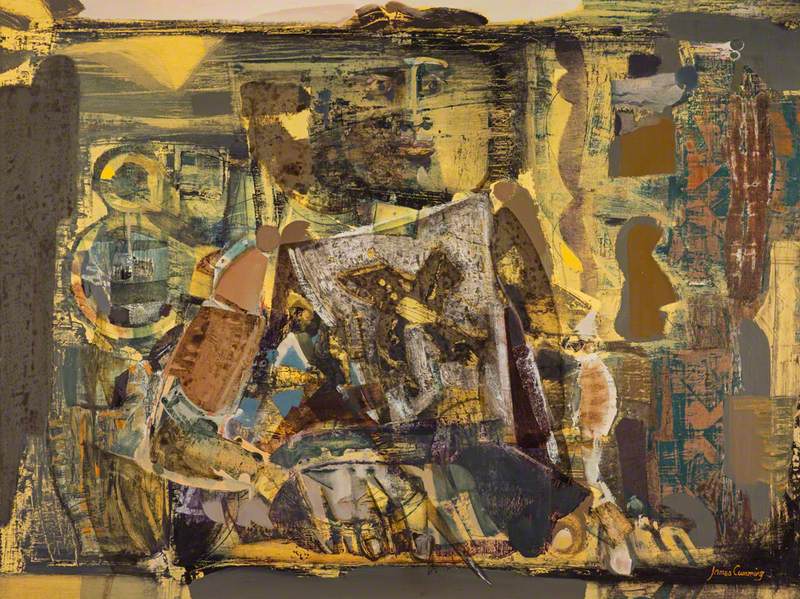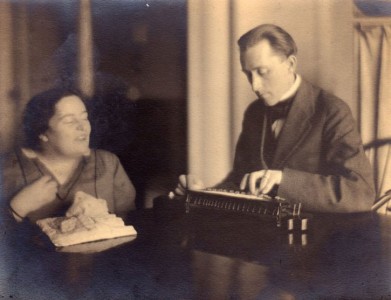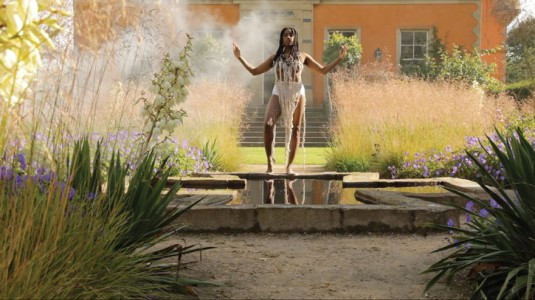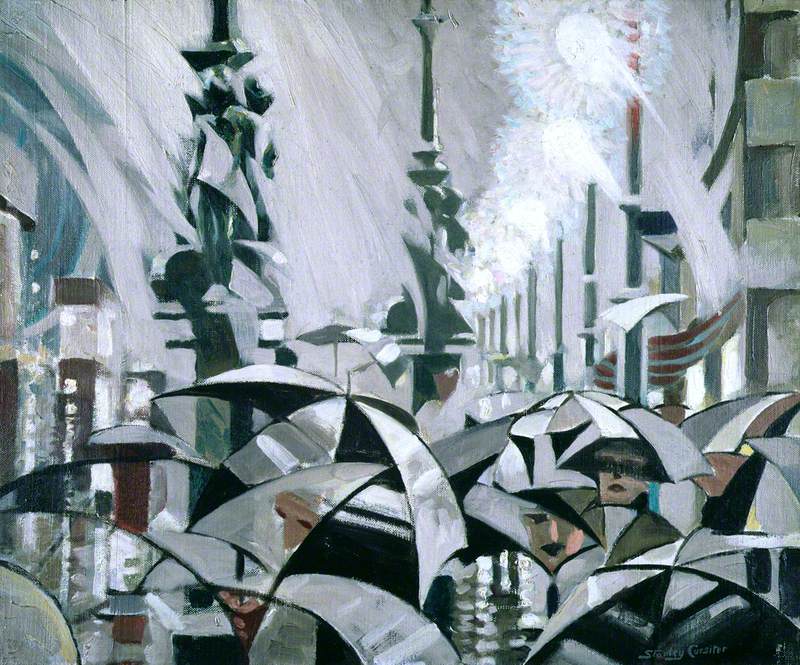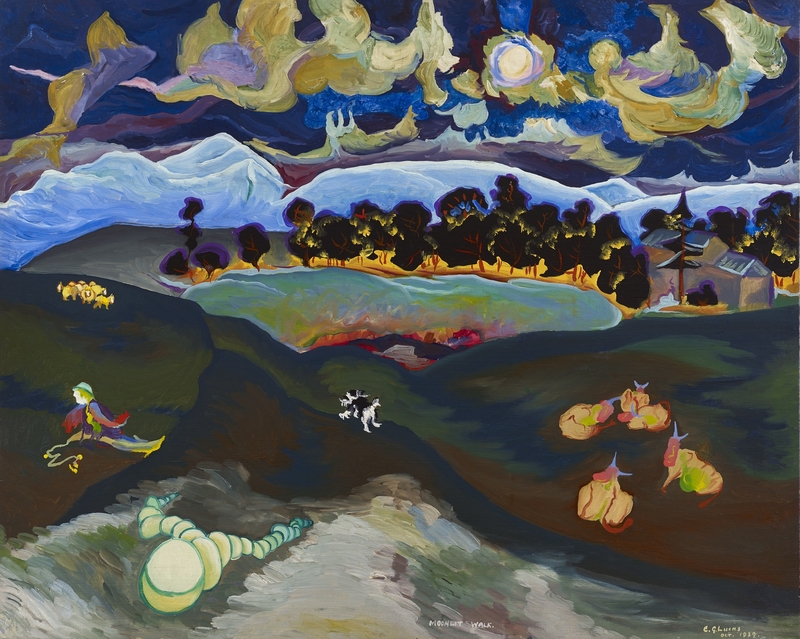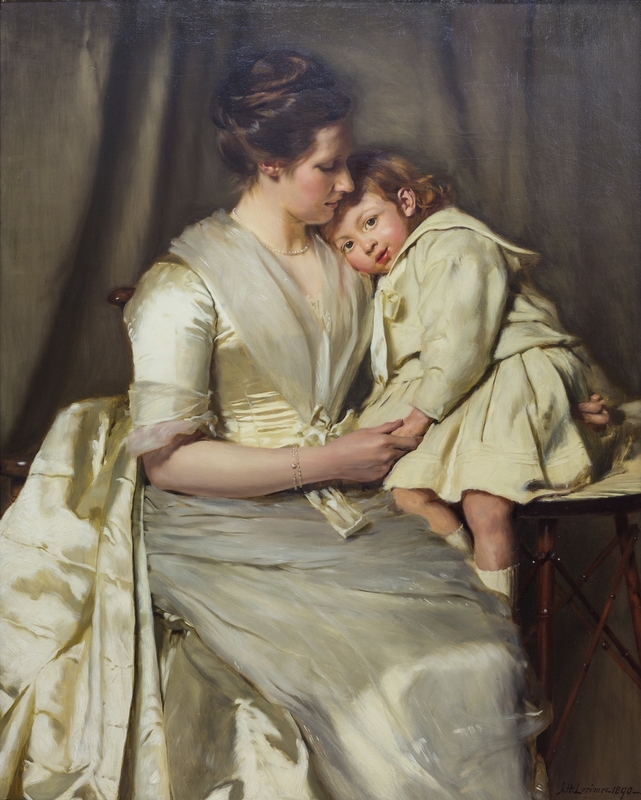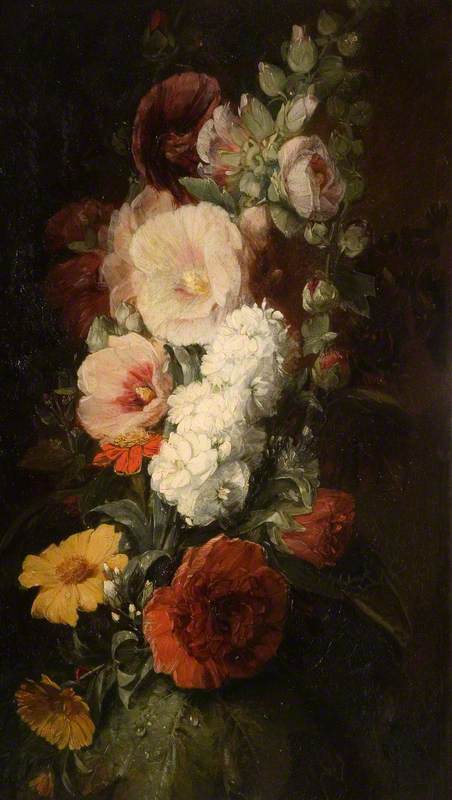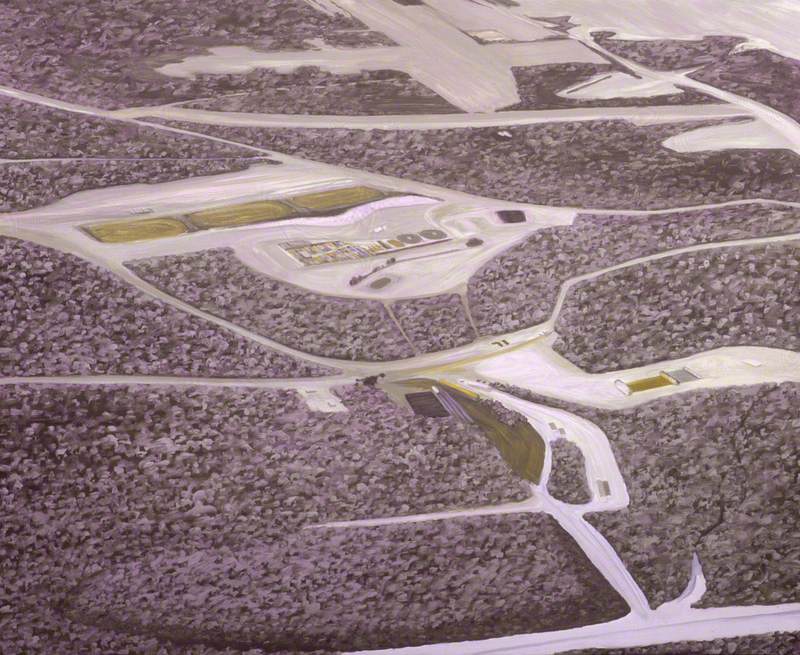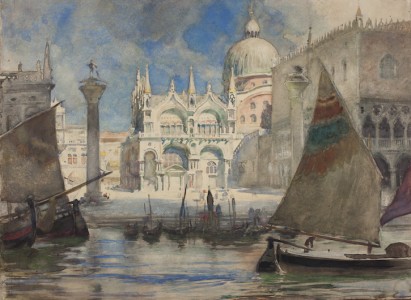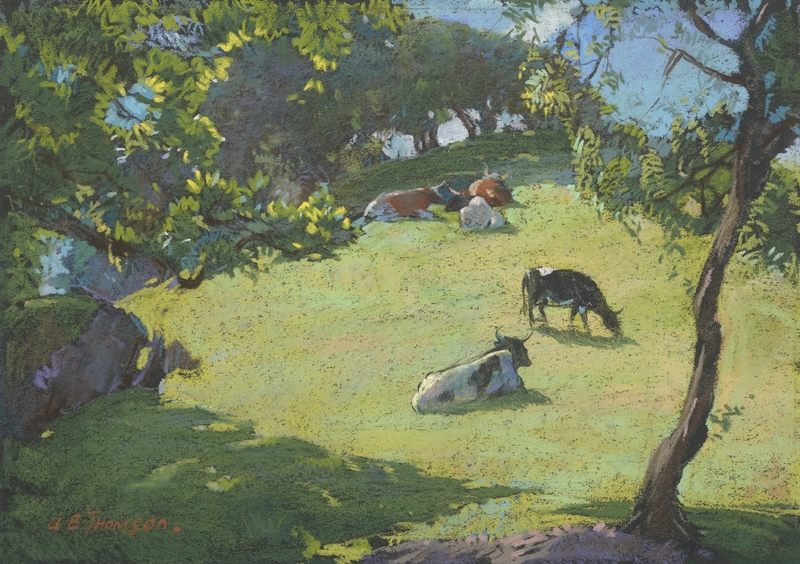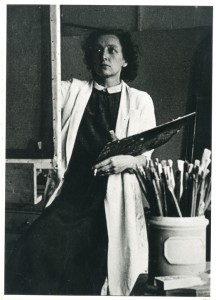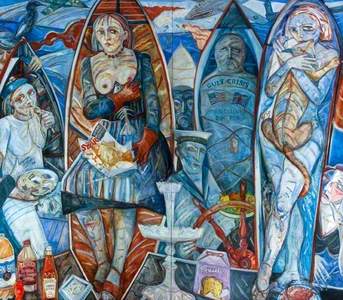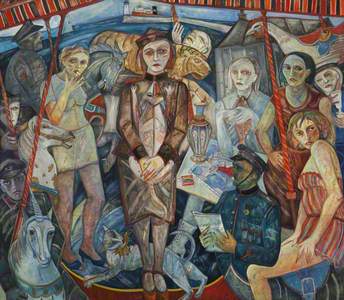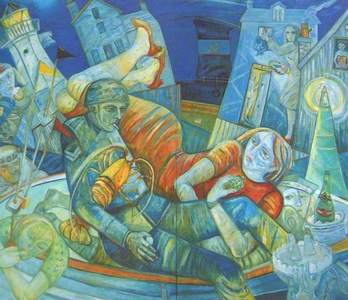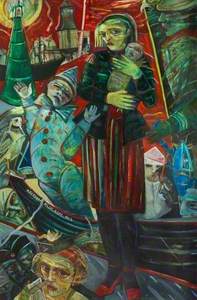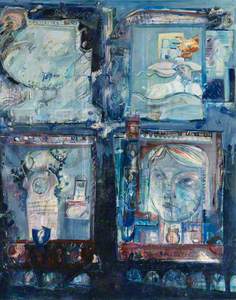Joyce W. Cairns is one of Scotland's most talented and respected artists. A long-standing painter, she has exhibited her work nationally and internationally. Her imagery – figurative, expressionist and powerfully resonant – has explored subjects that are mythological, historical, and deeply personal. Her fundamental themes reflect upon memory and the construction of self.
In 2018, she was elected President of the Royal Scottish Academy of Art & Architecture, due to the admiration for her oeuvre and the appreciation of her peers, making her the first woman President of the RSA. Here, she discusses with the art historian Tom Normand her work as an artist and her role in the Academy.
Joyce W. Cairns in her studio
c.1990s 
Tom Normand: Joyce, many thanks for taking this time to speak with me during what I know is a difficult and busy time for you as an artist and most especially as the President of the Academy. Of course, you had barely begun your tenure in office when the current pandemic became the new reality. But, importantly, you have been acknowledged as the first-ever female President of the Academy in its near 200-year history. I wonder if you can reflect upon what that means to you, at a personal level.
Joyce W. Cairns: My first experience, and love affair, with the Royal Scottish Academy of Art & Architecture began after visiting the Annual Exhibition for the first time when I was a schoolgirl. This was in 1963, during the Edinburgh Festival. I recall that the Academy's festival exhibition then featured Amadeo Modigliani and Chaïm Soutine. This was all very exciting.
Little did I imagine, at that point, that I would succeed in getting into art school, let alone have my work exhibited in such an august space, or be elected to the Academy. And, the truth is, I would have known nothing about 'Presidents' in those young years.
Where I Lived at Dovecot Grove
1970
Joyce W. Cairns (b.1947) 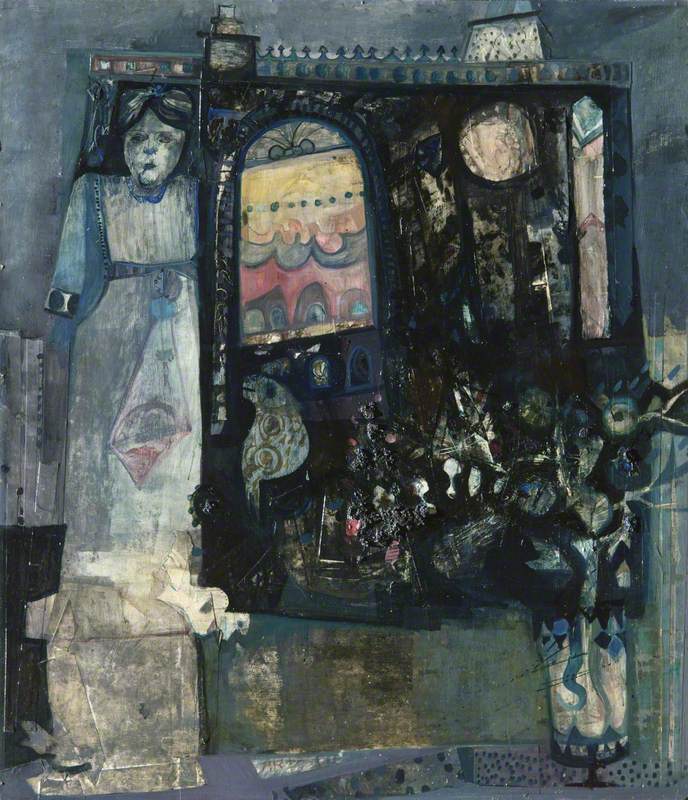
My student years opened it all up for me though. Firstly, studying at Gray's School of Art in Aberdeen from 1966 to 1971, then at the Royal College of Art in London from 1971 to 1974. Subsequently, I undertook a teacher's training course at Goldsmiths College in London. I was elected to the Academy as an Associate member in 1985, and then was made a full member in 1998. I can truthfully say that never once, during these years, had I any aspirations to take on the Presidential role. In fact, during my 28 years lecturing in drawing and painting at Gray's School of Art I always preferred to be a front-line teacher rather than a manager. I simply loved teaching and the relationships with students through the tutorial system. I had no desire to sit in interminable meetings with administrators and academics discussing policies that bore no relationship to the crucial business of inspiring emerging artists to be creative and to engage with the history of their subject.
Tom: And yet, Joyce, you became President of the Academy. How did that come about?
Joyce: Ah yes, what happened? How on earth did I end up agreeing to be nominated as President of the RSA? The answer may be vanity. During the preceding year, several Academicians had approached me to ask if I would consider the role. Initially, though extremely flattered, I was very much against it for a host of reasons: what qualifications, apart from being an artist, did I have to take on this huge responsibility?
But in fact, over the 34 years since becoming a member, I had served several times on Council, been Chair of the General Purposes Committee, which deals with many aspects of Academy business including all the awards, bursaries, residency schemes and benevolent funds. I had also been Deputy President, served as Convenor of, and taken part in, many Hanging and Arrangement teams for both the Academy Annual Exhibitions and the Student Competition, which became the New Contemporaries.
I realised that without this internal knowledge and experience, taking on the Presidency would have been extremely difficult. Also, over the past twelve years, the Academy has become a very complex and multi-faceted organisation. It now has a much larger remit, and so the responsibility to ensure that the organisation proceeds according to the rules of the constitution, and still continues to achieve all our aims and objectives is deeply challenging.
However, I did recognise that there would be no academy without the members who are a very special and wonderfully talented bunch of artists and architects. Also, we are blessed in having a terrific, responsible, knowledgeable and creative administrative team headed by the Director, Colin Greenslade. In many ways, they are the ones who keep the show on the road, and work tirelessly to make all our plans and schemes come to fruition.
Tom: And this is certainly the case Joyce, but much has been made of your election as the first female President in the Academy's long history. What are your thoughts on that development?
Joyce: Electing a female President of the Scottish Academy was long overdue. But, at least it was finally achieved after some 192 years! It might be suggested that this is a tad more progressive than the Royal Academy in London, who only last year, finally managed to elect Rebecca Salter as President of the institution; an institution which had been established for some 250 years. Moreover, at present, the Royal Hibernian Academy in Dublin, the Royal West of England in Bristol, and the Royal Ulster Academy in Belfast have all recently elected female Presidents.
I was hugely honoured to be elected as President and would like to believe that I was elected on my ability to do the job and not just because I was a woman. Throughout my career as an artist, I have never found that my gender has held me back or been a disadvantage. I firmly believe we should all be judged only on the quality of our work; not on age, gender or ethnicity.
Tom: And, of course, you took over as President before the eruption of the current pandemic. Can you reflect upon your ambitions for the Academy in that initial period before the outbreak of COVID-19?
Joyce: I certainly had ambitions for my period as President. Fundamentally, I wanted to encourage a sense of inclusiveness amongst our artists and the broader cultural community. I was also keen to further expand and develop our existing educational programmes. This would require finding external designated studio space outwith the academy building, and is one of many proposals being discussed at present.
I also wanted to raise the Academy profile by making our main events more significant, in a social sense. Principally, this would require making the Annual Exhibition Private View a much more celebratory occasion, with a broader base of participants and a more formal dress code. I, amongst others, had been concerned that it had become a little too like any other gallery opening. It is, after all, the main event for Academicians to exhibit their works.
We brought back the Open submission in 2019 to the Annual Exhibition, rather than having it as a separate exhibition of smaller works. This has proved to be very popular with the public and allows emerging and established artists to submit more ambitious works and the opportunity, if selected, to have their work hung alongside the Academicians.
As a first step, in 2019, I reinstated the Annual Academy Dinner, after an absence of over 15 years. This was a huge success and allowed patrons and other supporters of the Academy to meet and mingle with Academicians and the administrative team.
The truth is that I am, at heart, a gregarious person and so enjoyed reinstating the annual dinner. Also, part of my remit as President is to attend various events, celebrations and dinners given by other societies, embassies and organisations. This is all very positive for me, and helps to develop new contacts and networks that might be mutually beneficial, while raising the profile of the Academy generally.
Tom: Yes, but with the advent of the pandemic this will surely have been challenged. How has COVID-19 affected your activities as President?
Joyce: Well I mentioned, previously, the broad cohort of women who have been newly elected as Presidents of the various Academies it is, sadly, our misfortune to be faced with a worldwide pandemic.
For me, this has meant that for the past seven months all Academy business has been conducted from home: Council, General Assemblies, Committee meetings and Awards panels are all held on Zoom. It does have its entertaining moments, with guest appearances from various beasts and children, but we do miss actual human interaction.
Unfortunately, the most enjoyable aspects of the Presidential role have all disappeared; the various external social events and dinners, plus the special services at St Giles where the President and Council parade in full ceremonial robes alongside other Edinburgh Societies, all now unable to be held. Lockdown has also meant that we are unable to build on the social aspects of 2019, especially those associated with the Annual Exhibition, the New Contemporaries and other gallery exhibitions, all of which are crucial in developing future support and sponsorship.
So, the last few months have been a little disappointing. We have no way of knowing when, and in what form, we will be able to resume our normal activities. Throughout lockdown our role as a creative institution has continued with the Annual Exhibition arranged online for the first time in its 194-year history, becoming a successful role model for other societies looking to do the same. A series of virtual events have been held with more to follow, and the RSA Collections department has reached new audiences through blogs, social media and access to online research. And there's also the new RSA Bookshelf feature on our website, that gives page-turning access to some of our amazing sketchbook and library collections.
We are also delighted to be presenting an exhibition in the main RSA Galleries throughout January 2021 of the 12 award winners, out of 250 applicants, for 'Pandemic: a personal response to COVID-19'. This is a new award, for this year only, initiated by one of our staunch supporters and funded through the Morton Trust. It will enable artists, no more than ten years out of Art School, and receiving an award of £2,500 each, to make new work in response to the pandemic.
Tom: What does remain for you, however, is an extraordinary administrative load. Now, you have completed an exceptional body of work in the past. Some of this subtly autobiographical, some mythic in its tenor, and much of it related to your time in the former fishing village of Footdee, close to Aberdeen's harbour, where you have lived for some three decades.
There is also the truly epic body of work titled 'War Tourist', a project initially inspired by your father's service in the Queen's Own Cameron Highlanders, and then expanding into a remarkable meditation on warfare in the twentieth century. But how has your role as President impacted your creative work?
Joyce: In terms of my own work, I am unable to find enough time to switch off in order to allow the creative spirit to emerge.
We have a tradition in the Academy whereby the outgoing President invites a fellow Academician to create his or her portrait. This will be lodged in the Academy collections. So, for example, in the past, David Donaldson painted Sir Robin Philipson, and Jack Knox painted Ian Mackenzie Smith. Just before the last President, Arthur Watson, demitted office he asked if I would undertake the painting of his portrait. This is my next project, and Arthur is hoping it will not be a posthumous submission!
The point is that the gestation period for my large works often takes two or three years. There are several of these projects in the planning, but I can see no way of taking them forward at present.
Tom: And to add to these difficulties the event that looms large in the story of the Academy is the celebrations for its 200th anniversary in 2026. Are you engaged in the forward-planning for these celebrations, and indeed, will you remain as President for that anniversary?
Joyce: We are engaged in forward-planning for the 200th anniversary, and at present looking at the viability of different proposals suggested by the membership.
Joyce W. Cairns in 2019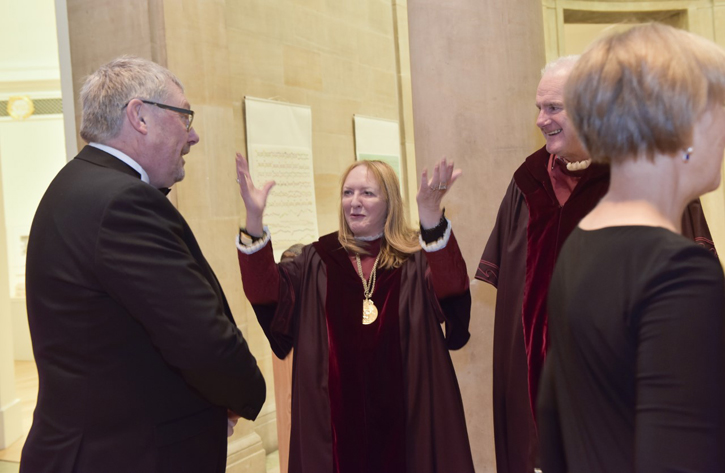
My three-year tenure as President ends in November 2021 so even if I was prepared to stand again for another three years, and in the event that I was re-elected, my final term would end in 2024. Nevertheless, I look forward to engaging in the festivities when, hopefully, all will be well.
Tom: Joyce, many thanks for answering these questions at this difficult time. We all wish you well for your time as President, and we certainly look forward to seeing more of your creative work in the future.
Tom Normand, art historian
